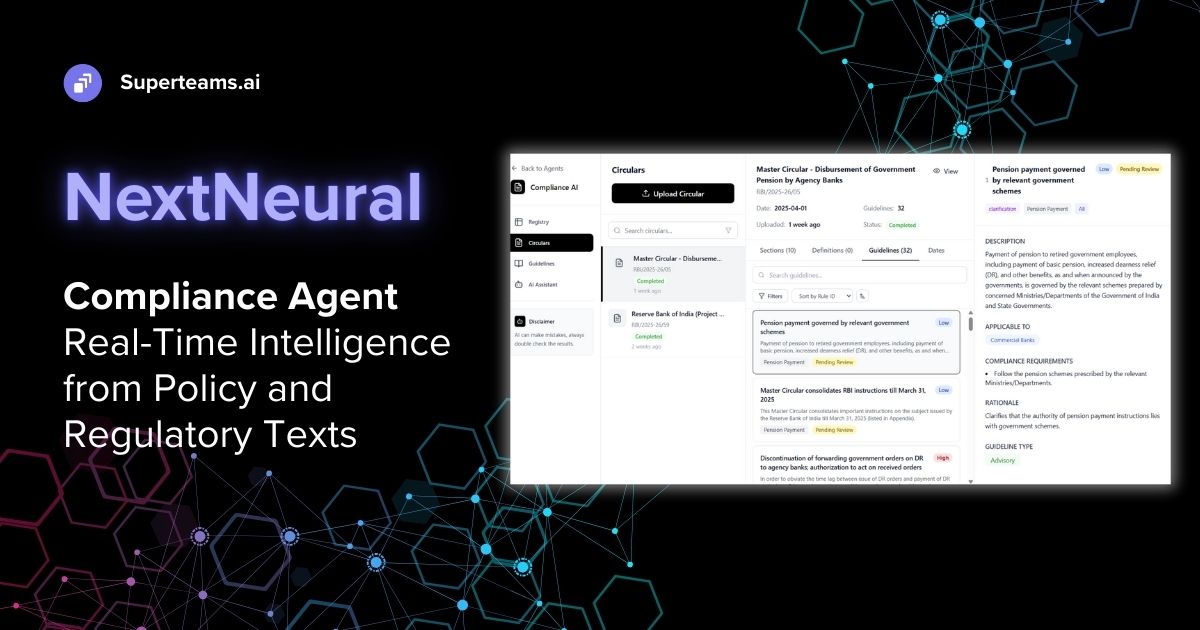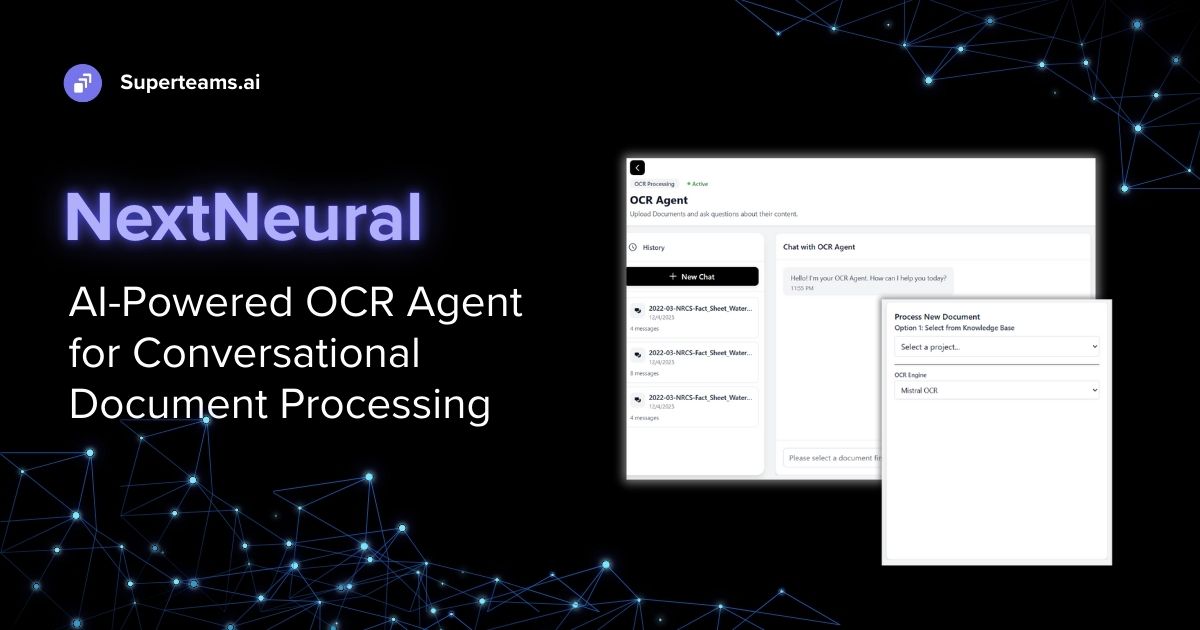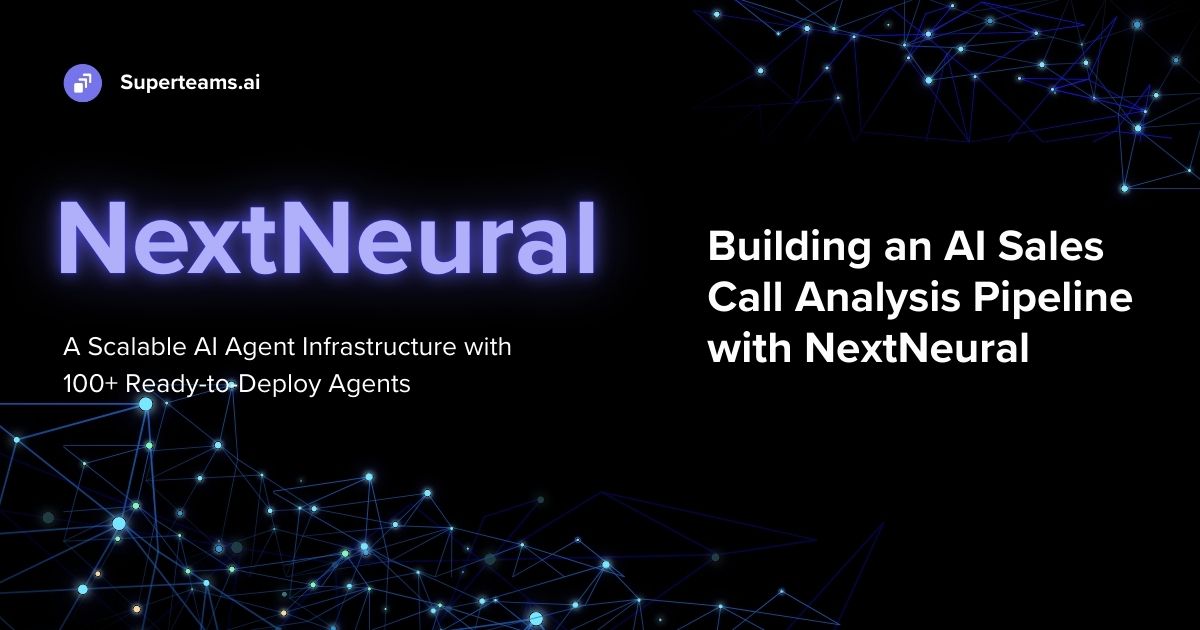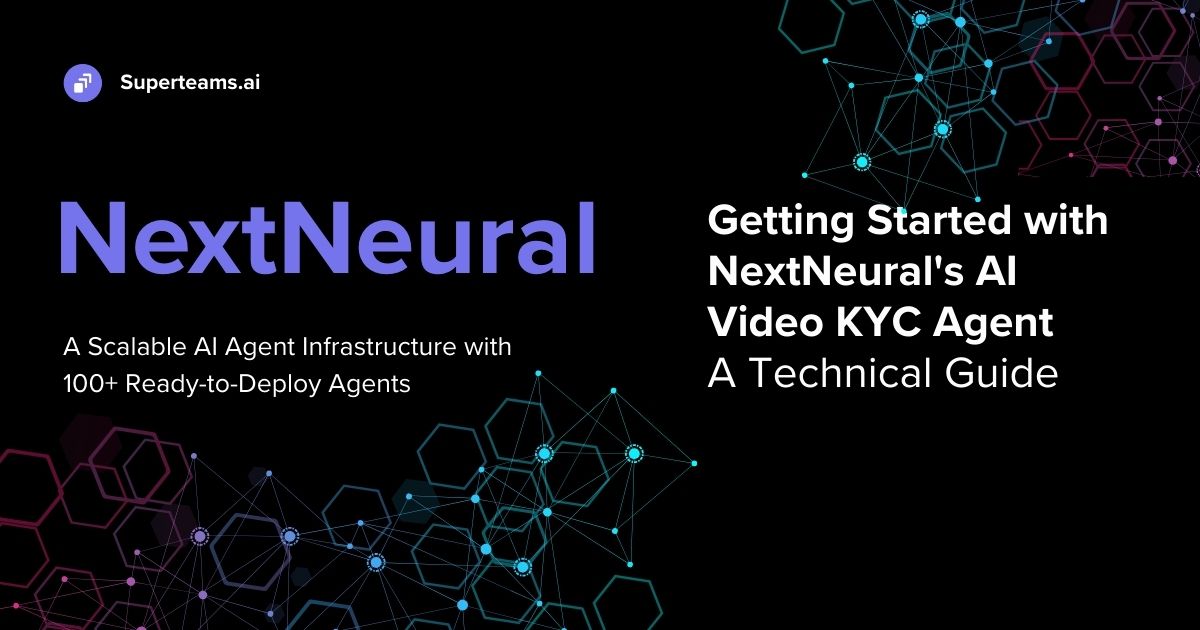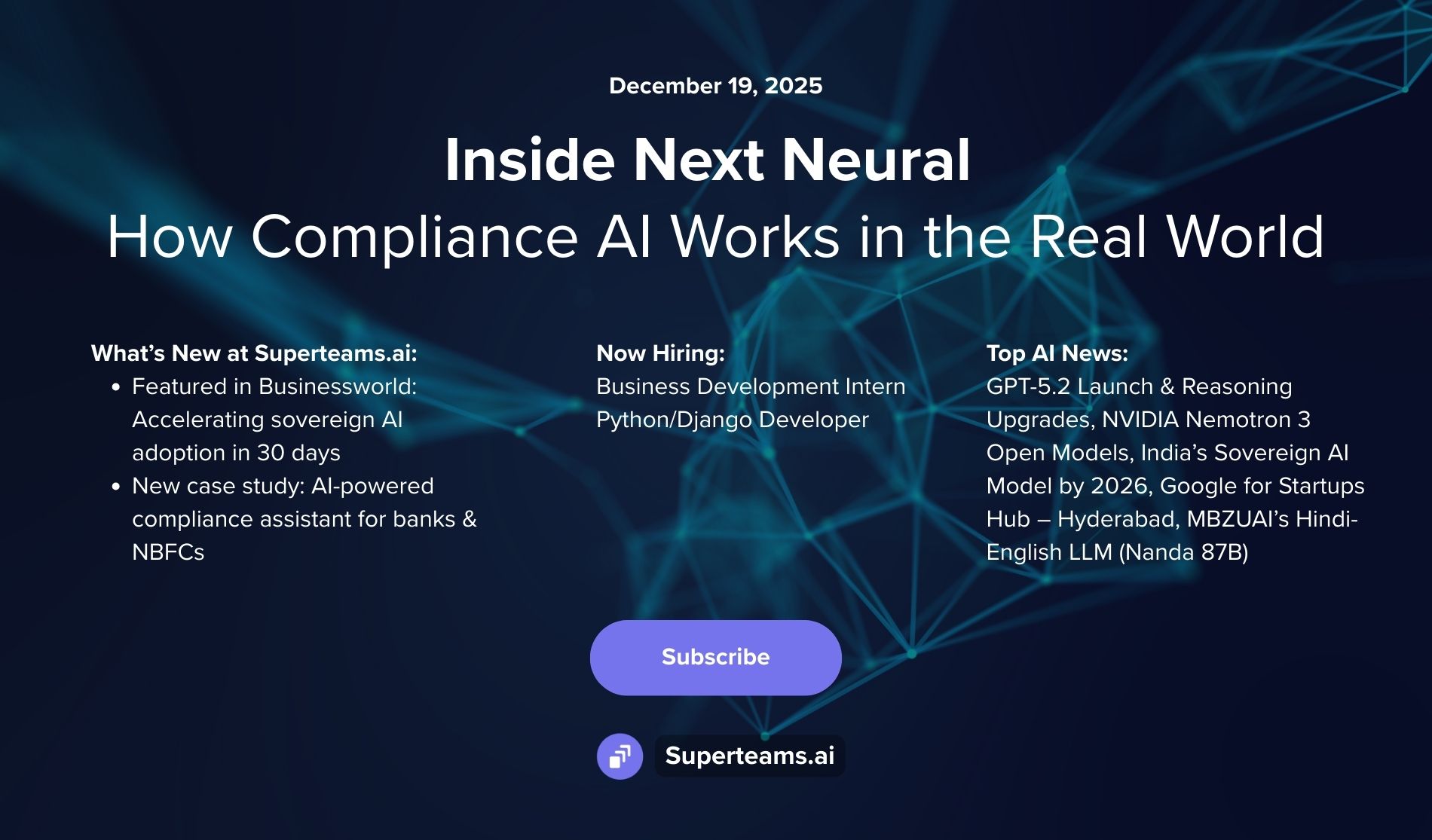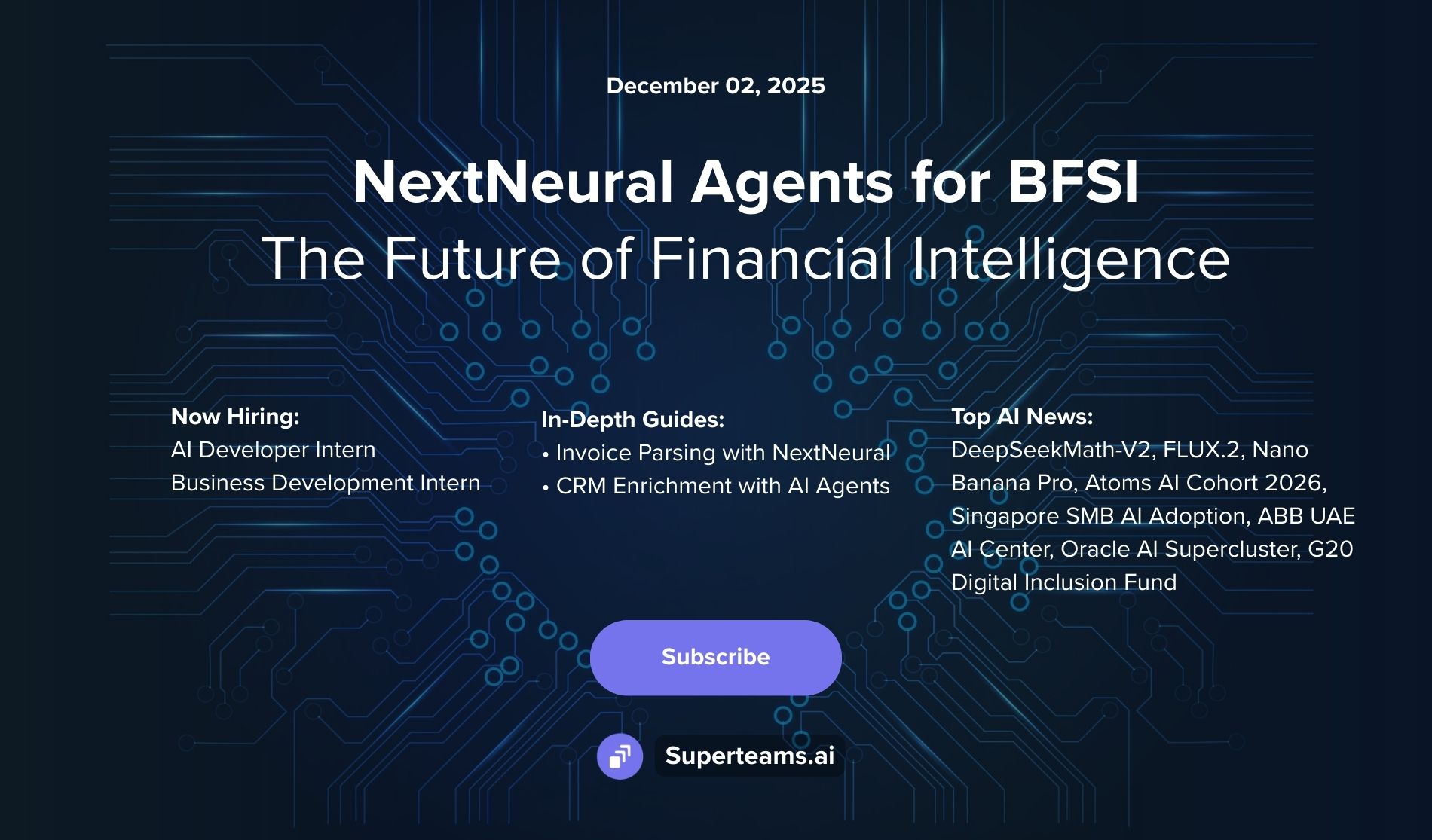Newsletter August 2025 Issue: Not Just Reasoning, But Retrieval, Is the Biggest Challenge of Building Modern AI
12 Aug 2025 Issue: Why retrieval is the real bottleneck in Agentic RAG, new SupercraftAI marketing assistant, Superteams openings, and key AI launches from OpenAI, Alibaba, Z.ai, DeepMind
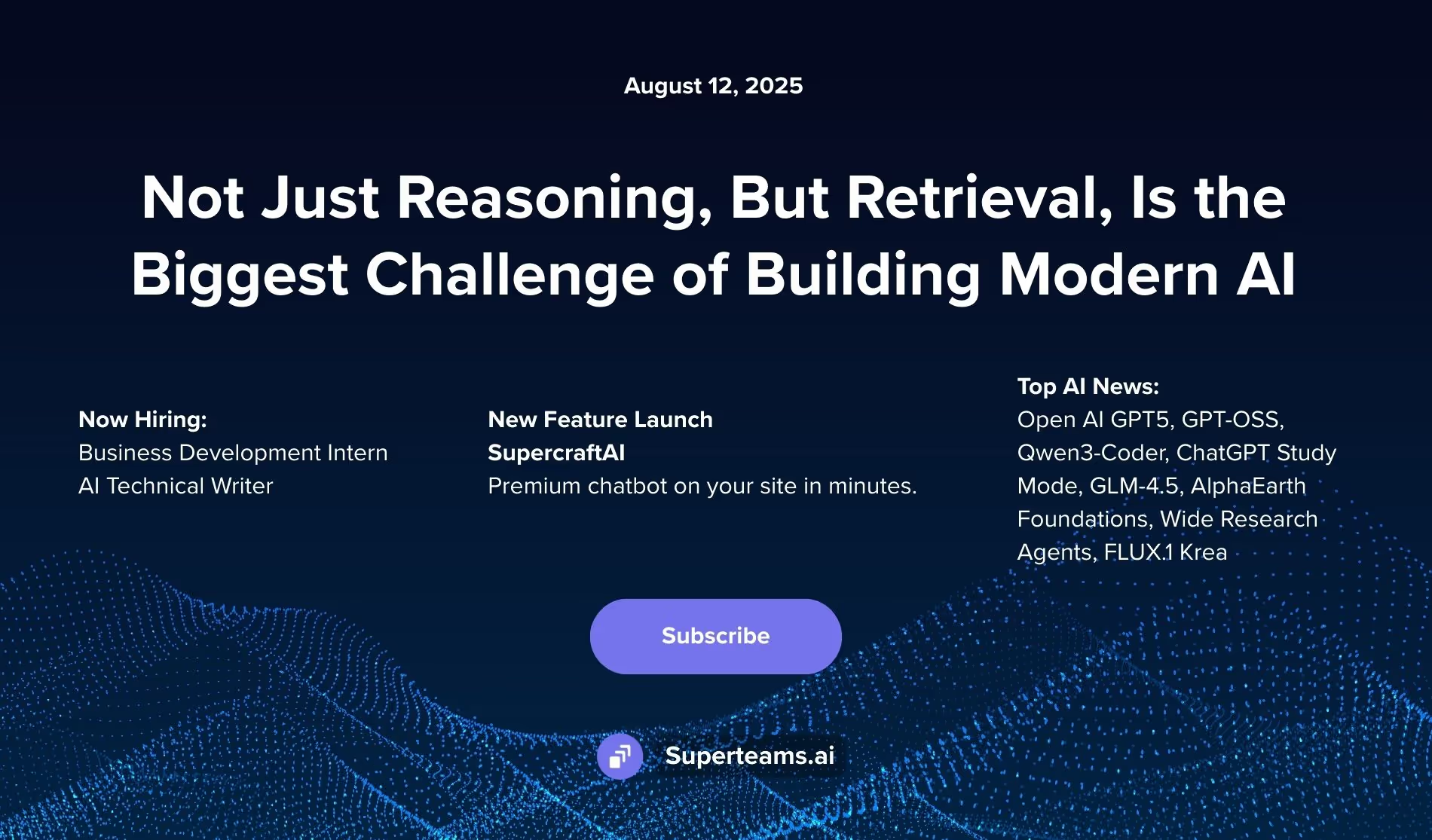
When we talk about advancing modern AI, especially Agentic RAG (Retrieval-Augmented Generation), most attention goes to reasoning — chain-of-thought improvements, tool use, and planning. But in practice, the largest bottleneck is retrieval: how we find the right information for the model to reason over in the first place. Even the most capable LLM will hallucinate or misinterpret if the context is incomplete, irrelevant, or poorly ranked. This is why retrieval design — not just reasoning — has become the real differentiator in production-grade AI systems.
Let's take a look at why. In real life scenarios, platform companies generate hundreds, thousands or millions of data points per day. When you build agentic AI that can reason over such data, you have to solve the retrieval bottleneck before you can even think about reasoning quality. Your system needs to locate the most relevant, trustworthy, and contextually rich information fast — often in milliseconds — and feed it into the LLM in a way that preserves meaning. That’s where a well-designed retrieval layer becomes the backbone of your agentic RAG pipeline.
Modern Retrieval Methods
The retrieval method you will use will be highly dependent on the kind of data the AI system has to work on. Is most of your data stored in documents? Are they in SQL databases? Do you need systems that can reason over interconnected data? These questions become pertinent the moment you start building systems that will work in production.
In many cases, you may need to combine multiple retrieval methods instead of relying on a single search call. Below, we have listed some of the most common retrieval methods in use today:
- Exact Match Filters – Apply metadata filters, SQL conditions, or RBAC (Role-Based Access) rules before retrieval to narrow the dataset.
- BM25 Keyword Retrieval – Retrieve documents based on exact term matches for precision-critical queries.
- Vector Similarity Search (k-NN / ANN) – Use embeddings to find semantically similar chunks via cosine similarity, dot product, etc.
- Hybrid Search – Combine keyword and vector search for balanced precision and recall.
- Multi-Vector Retrieval – Store multiple embeddings per chunk (title, summary, facts) to match different query intents.
- Dense + Sparse Fusion – Merge dense semantic vectors with sparse term-based scores (e.g., ColBERT, SPLADE).
- Graph Retrieval – Traverse knowledge graphs to surface entities, relationships, and paths that connect concepts, enabling reasoning over structured relationships instead of flat text alone.
- Reranking Models – Retrieve a broad set, then rerank with cross-encoders or LLMs for better relevance.
- Agent-Orchestrated Iterative Retrieval – Let the agent reformulate queries, apply filters, and chain searches mid-task.
- Contextual Retrieval Chains – Adapt queries using conversation history or intermediate tool outputs.
- Domain-Adaptive Embeddings – Train embeddings on your industry’s terminology for better domain-specific matching.
When you pick the right retrieval methods, you enable your AI to behave more like an informed agent, continuously adapting its search strategy as it reasons. This combination of adaptive retrieval + advanced reasoning is what separates a toy chatbot from a production-ready intelligent system.
Can Frameworks Help?
Frameworks can definitely give you a head start. Many popular RAG and agent orchestration frameworks — LangChain, LlamaIndex, Haystack, Semantic Kernel — provide prebuilt connectors, vector store integrations, and query pipelines. If you’re working with a small dataset, standard document formats, and predictable retrieval patterns, these tools can save you weeks of development time. They abstract away the plumbing so you can quickly prototype and validate your agent’s reasoning loop.
But as soon as you move into production with domain-specific data, the cracks start to show. Each domain has unique data quirks:
- In legal tech, you’re working with highly structured clauses and references that demand exact-match and citation-aware retrieval.
- In manufacturing, you’re dealing with real-time sensor streams, maintenance logs, and CAD metadata that require hybrid temporal + semantic search.
- In finance, compliance rules and time-bound datasets mean retrieval has to respect regulatory cut-offs and audited metadata.
- In healthcare, patient data lives across EHR systems, medical imaging repositories, and research papers — each requiring different retrieval strategies and privacy enforcement.
Frameworks, by design, aim for generalized abstractions. That’s their strength in prototyping — and their weakness in scaling. They can hide too much of the retrieval complexity, making it difficult to:
- Implement multi-index retrieval across different data modalities.
- Tune retrieval pipelines for latency-sensitive queries at scale.
- Apply domain-adaptive embeddings without breaking internal data flow.
- Inject agent-led query reformulation loops that don’t fit the framework’s orchestration model.
At some point, you’ll find yourself writing more custom connectors, pre-processors, and rerankers than the framework’s abstractions were designed to handle. That’s when you need to start treating retrieval not as a “black box” module but as a first-class engineering problem — built for your domain, your latency targets, and your accuracy requirements.
The Right Approach
Instead of forcing your system to fit a framework’s limitations, flip the approach: build the retrieval flow you need, then selectively use framework components where they add speed without blocking flexibility. This way, you keep control over query reformulation, index selection, and ranking logic, while still benefiting from prebuilt tooling when it makes sense.
In production, the most successful agentic RAG systems are not those that rely solely on the biggest LLMs, but those that pair sharp, adaptive retrieval pipelines with capable reasoning loops. When your AI can consistently find the right context, it stops guessing and starts delivering results you can trust. Retrieval isn’t the supporting act — it’s half the intelligence in your intelligent system.
Happy building!
What’s New at Superteams
We are launching a new feature on the SupercraftAI Platform - Your Agentic AI Marketing Assistant
A Premium Agentic AI Chatbot—Free and Instantly
Drop premium chatbots on your website in minutes with the SupercraftAI platform’s latest feature. Instantly enhance customer engagement with an AI assistant trained on your data, tailored to your brand, and available 24/7—no coding required.
Why add this new chatbot to your site?
- Trained on Your Data: Upload FAQs, documents, your knowledge base, or let the chatbot learn directly from your website content—including landing pages, blogs, and more—for precise, brand-aligned answers.
- Multiple Languages: Engage customers globally in their preferred language.
- Powered by Top LLMs: Built on advanced models from OpenAI, Claude, and more for natural, intelligent conversations.
- 24/7 Lead Capture: Capture and qualify leads around the clock.
Get Started in Four Simple Steps:
- Train: Upload your content—your AI assistant is instantly ready to help.
- Customize: Brand your chatbot’s appearance and tone for a seamless customer experience.
- Embed: Add to any website (WordPress, Shopify, and more) with a simple copy-paste.
- Track Results: Access real-time analytics, lead capture, and customer insights.
Unlock Your Website’s True Potential:
- Improve Customer Experience: Deliver instant, always-on support and personalized engagement.
- Reduce Support Costs: Automate routine queries, letting your team focus on high-value work.
- Grow Your LLM SEO / GEO: Drive online visibility with SEO-optimized, AI-driven conversations.
- Increase Lead Funnel: Proactively engage visitors and hand off qualified leads to your sales team.
Join the wait list to get early access and exclusive updates.
Current Openings at Superteams
- Business Development Intern
- We’re looking for an MBA-graduate Business Development Intern to support our GTM efforts. You’ll work directly with the founding team to work on lead prospecting, build relationships with frontier companies, and experiment with outbound and inbound growth strategies.
- Apply link
- AI Technical Writer
- We’re looking for freelance AI engineers to collaborate with us. The work will involve a mix of writing and building demos.
- Apply link
What’s New in AI:
OpenAI Launches GPT-5: Unified Deep-Reasoning AI with 400K Context for Agentic Workflows
OpenAI unveils GPT‑5, a unified system with fast and deep‑reasoning models plus a real‑time router. It shines in coding, agentic workflows, long‑context handling (400K tokens), and safety.
OpenAI Debuts GPT-OSS: Open-Weight MoE Models for Agentic Workflows
OpenAI releases gpt‑oss‑120b and gpt‑oss‑20b — its first open‑weight Mixture‑of‑Experts models since GPT‑2. Licensed under Apache 2.0, they offer near‑parity performance with o4‑mini, support long-context tool use and reasoning, and can run on consumer hardware (as little as 16 GB RAM). Available free for developers, with safety testing and visibility built in.
Qwen3-Coder: Alibaba’s Flagship MoE LLM for Agentic Coding
Alibaba launches Qwen3‑Coder (480B parameters, 35B active), plus Qwen3‑Coder‑30B‑A3B‑Instruct. Native 256K context, 1M via YaRN, and Qwen Code CLI enable scalable, agentic coding and tool use.
OpenAI ChatGPT Study Mode: a New Way to Learn
OpenAI has launched “Study Mode” in ChatGPT, using Socratic-style guidance, step-by-step scaffolding, and personalized questioning to encourage deeper learning rather than answer shortcuts.
Z.ai debuts GLM‑4.5 and GLM‑4.5 Air, open‑source Mixture‑of‑Experts models (355B/32B and 106B/12B active parameters), offering hybrid reasoning, agentic tasks, coding, 128K context.
DeepMind Introduces AlphaEarth Foundations
Google DeepMind unveils AlphaEarth Foundations, a "virtual satellite" embedding-field model integrating petabytes of multimodal Earth‑observation data into compact, 10 m, 64‑dimensional annual maps. Enables high‑accuracy environmental tracking, change‑detection, clustering, and insight generation via Google Earth Engine. Dataset public from 2017–2024.
Wide Research: Manus Unleashes 100+ AI Agents for Parallel, High‑Volume Autonomous Workflows
Manus introduces Wide Research, enabling massive-scale research via parallel multi-agent orchestration. A single prompt launches dozens of full-purpose agents researching hundreds of items simultaneously.
FLUX.1 Krea [dev] Launches: Open-Source Photorealistic Text-to-Image Model
Black Forest Labs and Krea AI unveil FLUX.1 Krea [dev], a 12B-parameter rectified-flow model that delivers photorealistic, distinctive aesthetics, open weights, strong prompt fidelity, and alignment with the FLUX.1 ecosystem.
About Superteams.ai
Superteams.ai acts as your extended R&D unit and AI team. We help you build and launch agentic AI workflows in 30 days using fractional, on-demand AI teams.
Book a Strategy Call or Contact Us to get started.


